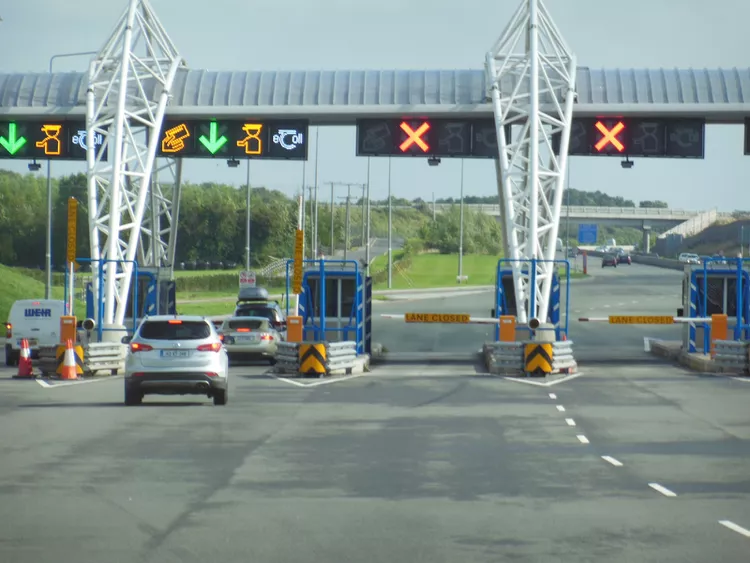Overview of Toll Charges in Ireland
Visitors may be surprised to learn that they have to pay road tolls in Ireland. While all roads in Northern Ireland are free to use, several modern long-distance routes and some time-saving bridges in the Republic are subject to fees. Road tolls in Ireland can indeed be costly if you drive extensively, and it is crucial to be informed about them. Anyone driving in Ireland should recognize that there are toll roads and various options for payment, as not all tolls operate as straightforward barrier systems.
Why Are There Toll Charges in Ireland?
This is a relevant question, especially since Irish road users already pay road tax. The National Roads Authority and the Railway Procurement Agency merged into Transport Infrastructure Ireland and has been authorized through the Local Government (Toll Roads) Act of 1979 to impose and collect tolls for the use of certain roads. Generally, this refers to significant new road developments funded through Public Private Partnerships (PPP). Consequently, a portion of the funding for new roads from this partnership derives from public resources, while the remainder comes from private and commercial sources. To recover these investments, a strategy has been adopted to maximize tolling on these roads.
According to Transport Infrastructure Ireland, toll roads are constructed as additions to the current national road network rather than improving existing roads. In practice, this often leads to the deterioration of older roads, making them more difficult and unattractive to drive. Therefore, these factors may entice drivers to pivot onto the toll road.
How to Pay for Toll Charges
cash, credit, or debit card,” with payment possible at toll booths, machines, or (not 24 hours) to an attendant. If paying with cash, remember that only euros are accepted, and machines do not accept bronze coins. It is also important to note that notes over 50 euros are not accepted, and only a few machines are equipped to provide change.
A notable exception is the Liffey on the Westlink Toll Bridge on the M50, which features barrier-free (and often confusing) tolling.
Keep an eye on the signs indicating an upcoming toll booth as you approach. Heed those warnings, since there is no way to exit the motorway once the toll plaza is visible. At that point, you must pay the fee, either in cash (into a basket or to a cashier) or via credit or debit card.
Paying cash (in euros only) is often the simplest method. Occasionally, non-Irish euro coins aren’t accepted by automatic systems, which can lead to inconveniences. Additionally, the automatic system may incorrectly categorize your vehicle and charge a higher fee.
Which Roads Have Tolls?
As of December 2018, here are the roads that will incur charges:
- M1 – motorway bridge over the Boyne, between Gormanston and Monasterboice, toll charge for cars is €1.90.
- M3 – motorway section between Clonee and Dunshaughlin, toll charge for cars is €1.40.
- M3 – motorway section between Navan and Kells, toll charge for cars is €1.40.
- M4 – motorway section between Kilcock and Kinnegad, toll charge for cars is €2.90.
- M6 – motorway section between Galway and Ballinasloe, toll charge for cars is €1.90.
- M7 and M8 Junction – motorway section between Portlaoise West and Borris-in-Ossory (M7) or Rathdowney (M8), toll charge for cars is €1.90.
- M8 – motorway section between Rathcormac and Watergrasshill (Fermoy Bypass), toll charge for cars is €1.90.
- M50 – motorway bridge over the Liffey between Blanchardstown and Lucan, €3.10 for unregistered cars.
Additionally, several non-motorway routes incur toll charges:
- Dublin Port Tunnel (between M1, Dublin Airport and Dublin Port), toll charge for cars is up to €10 (yes, 10 euros).
- East Link Toll Bridge (crossing the Liffey near Dublin Port), toll charge for cars is €1.40.
- Limerick Tunnel, toll charge for cars is €1.90.
- N25 Waterford City Bypass, toll charge for cars is €1.90.
Can Drivers Avoid Toll Charges?
Although drivers can bypass toll charges by selecting different, slower routes, tourists often have limited options. Unless travelers are willing to detour from clearly marked and convenient roads that require payments, it may be best, especially for those unfamiliar with the area, to pay the tolls for smoother navigation.





